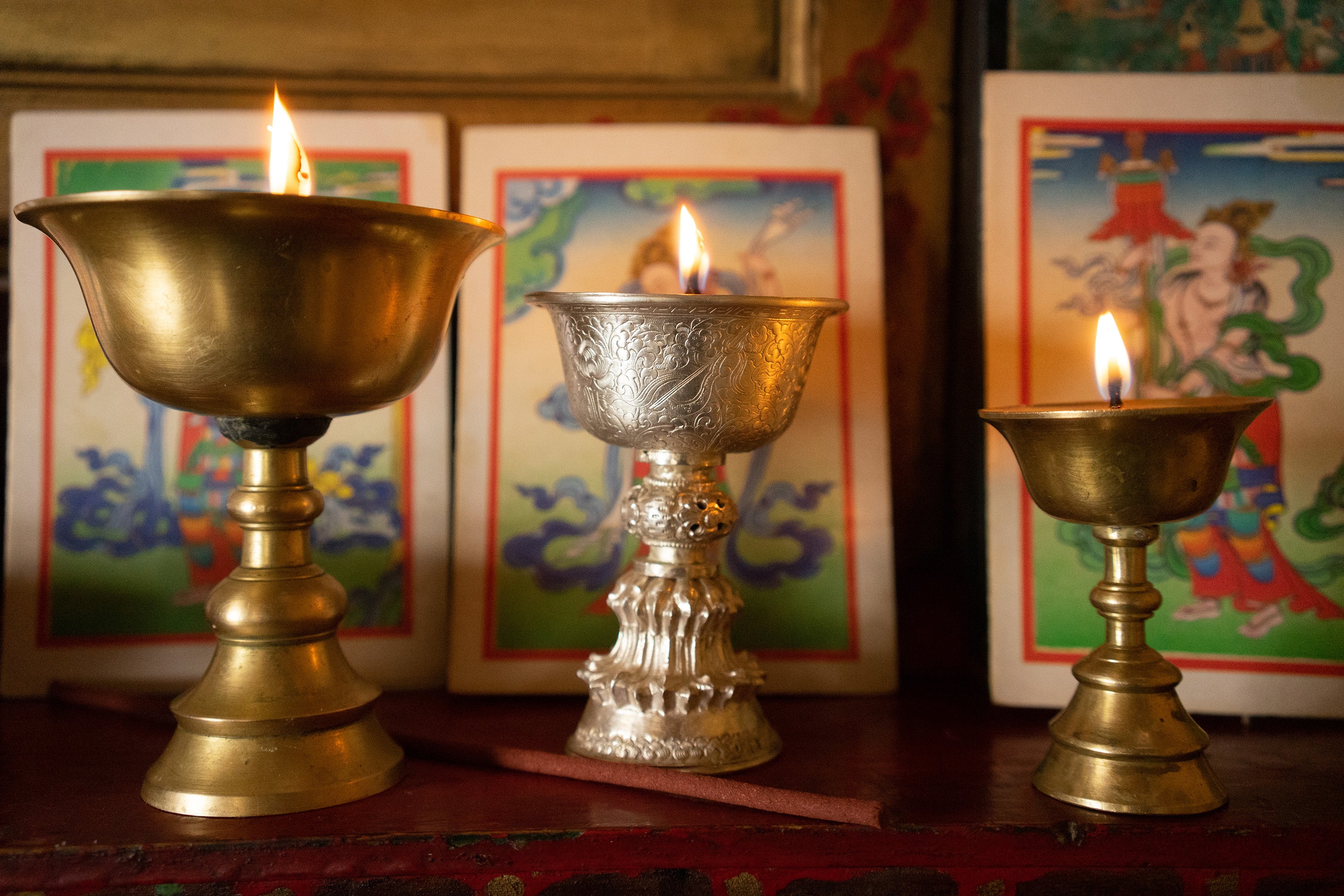Losar - Tibetan New Year
Losar marks the first day of the first month of the Tibetan lunar calendar; a time to put behind the negative aspects of the old year, make resolutions and turn a new leaf. On Losar, good omens will be eagerly sought out, and the day, carefully prepared. Families have been busy frying twisted sweets, or khapses, and on the 29th of the old year, they will thoroughly clean their homes and have the customary ‘gu thuk’ thukpa, a soup with large dough dumplings containing substances that mark the character of the recipients; bits of coal meaning a bad disposition, a lump of sugar, sweetness, a pinch of chili, a fiery temper. An elaborate display of offerings, the derga, is prepared, constructed with a pile of hollow cookies in the shape of donkey ears, the hollow part facing up, and filled with cadies, dried fruit and khapses.
On the first, everyone rises early, don new clothes and make offerings on the family altar, passing around the chenma, a wooden vessel containing barley grains on one side and tsampa flour on the other. Everyone takes a pinch, to first thrown upwards as an offering to the gods, then consumed. In Dharamsala, this is followed by an exodus to the Thekchen Choling temple, where the Namgyal monks hold a ceremony of the rooftop. People make offerings, do prostrations, and circumambulate the temple.
The next few days are spent seeing friends, playing games and having fun. Many choose to take time off to visit family in other Tibetan communities, mainly in the South of India, or go to Bodh Gaya on pilgrimage, followed by visits to the other landmarks left by the Buddha; Lumbini, where he was born, and Sarnath, where he gave his first teachings.




